A Variety Of Book Printing Options Explained
Traditionally, the thought of writing your own book and getting it printed and onto the shelves of a bookstore or library would have seemed highly unlikely to the average person. Today, however, advances in publishing and printing means that self-publishing is a very real option for many – and it doesn’t have to prove expensive!
There are many cheap book printers in the UK and online book printing companies offer you the expertise and opportunity to have your work printed professionally! There are many different aspects and options to choose from in how you want your printed book to look – here are a few of the things you will need to consider:
Printing options for self publishing a book
If you are self-publishing a book there are different printing options available and, based on the size and format of your book, you can decide whether to have your book printed as a paperback or hardback. The most common sizes requested are A4 or A5 but there are options for Royal, Square, Demy and Crown Quatro sizes if any of these are more suitable for your publication. You should also consider which page format is the most relevant for your book – landscape or portrait?
There are many types of binding you can choose from
Again, there a few different options from which to choose when considering the binding method for your book. Dependent upon the type of book you are having printed you can select the most appropriate book binding finish you require – for softback books you should consider perfect binding which entails gluing the pages into the cover before trimming to give a perfect finish, PUR binding which uses much stronger glue which is more flexible, allowing books to open wider and is longer lasting and therefore ideal for books with larger numbers of pages. Other relevant binding methods for softback books include flexi-binding and wiro-binding, otherwise known as ring binding.
For hardback books it may be better to consider the more traditional case binding which allows books to be sewn or glued and can have square or round spines. Sewn binding is appropriate for either hard or soft backed books whilst there are different specialised options for publications like brochures or magazines such as saddle-stitched binding which involves folded sheets in a booklet form and is stapled down the spine.
Research your paper options
Consider which paper options you would prefer for your book – you can choose between coated paper, which has a smoother feel and has either matte, silk, or gloss finish, or opt for uncoated paper which has a slightly ‘coarser’ finish with a more tactile quality. When choosing your paper type consider whether you want full colour pages or black and white, and whether you want your pages printed as single or double-sided – consider which is better for the content of your book.
Consider the preferences for your book cover
After deciding upon your paper and binding choices, you need to also consider the type of cover you require for you book. Once again, there are options to select from – for softback book covers you can choose between one-sided board, which is the most popular option, in which one side is printed and offers a sturdy, substantial cover, or alternatively, choose silk cover which can be printed on both sides allowing for inner cover text.
For hardback covers you can choose printed paper case which is a printed and laminated sheet wrapped around and glued onto a case bound book. This cover can be used with or without a dust jacket. An alternative is to opt for a cloth book cover – this is a more traditional option that has often proved more expensive, but imitation fabrics have now made this a more viable choice – again, these covers can be used with or without dust jackets.
For the final finish to your book cover choice, consider having them laminated – matte lamination gives a smooth, low-sheen finish and is the most popular choice, whereas gloss lamination provides a high-sheen finish that protects and enhances your book cover.
Important finishing touches
There are also many additional print finishes available to help give your book that extra high-quality appearance – embossing and debossing (the raising or indenting of parts of the cover) can add extras emphasis, whilst a UV varnish can highlight specific areas of the cover by adding a shine to them. You may choose to add a ribbon marker to your book and gilt edging, where ink is applied to the edge of each page and will also enhance the overall look of your book.
Whilst it may seem a daunting task to get your written work into print, modern printing methods offer a much easier route than was traditionally available – if you are looking to get a book printed and bound in the UK, speak to a professional book printing company. They will have the knowledge and experience to guide you through the options and choices available to get your work published and presented in the professional manner you want.
Choose Book Printing
If you’re considering self-publishing a cookbook, consider BookPrinting. We offer book printing for self-publishers and our dedicated team have a wealth of experience in the book production and publishing arena. We produce high quality books and provide assistance to publishers and authors so they can focus on what they do best. We offer short run hardback book printing, custom book printing, and paperback printing, all within the UK. Whatever your requirements, we are confident we can help! Whether you’re looking for a free bespoke estimate or some professional advice, contact us today and let us help you to get a book printed. Call us on 01525 621742 / 01525 621754 or email: enquiries@bookprinting.co.uk.

